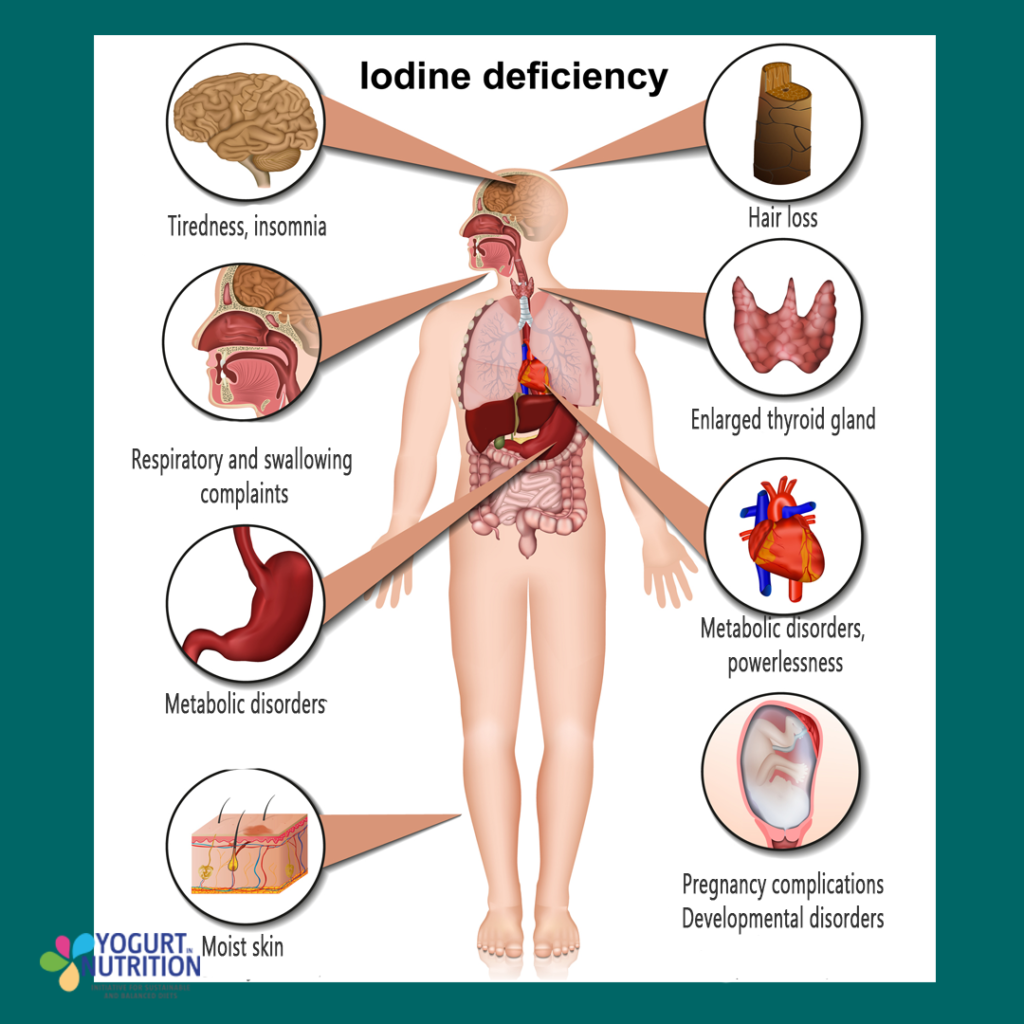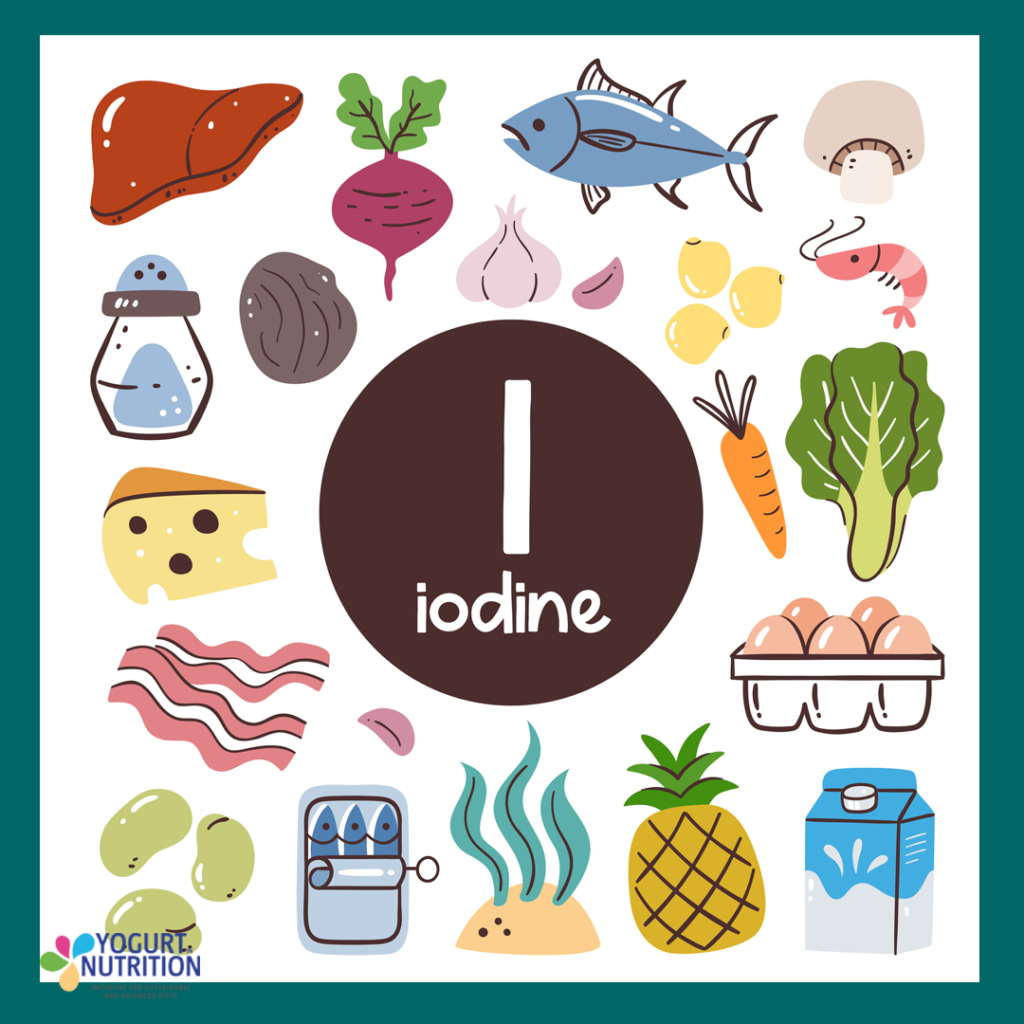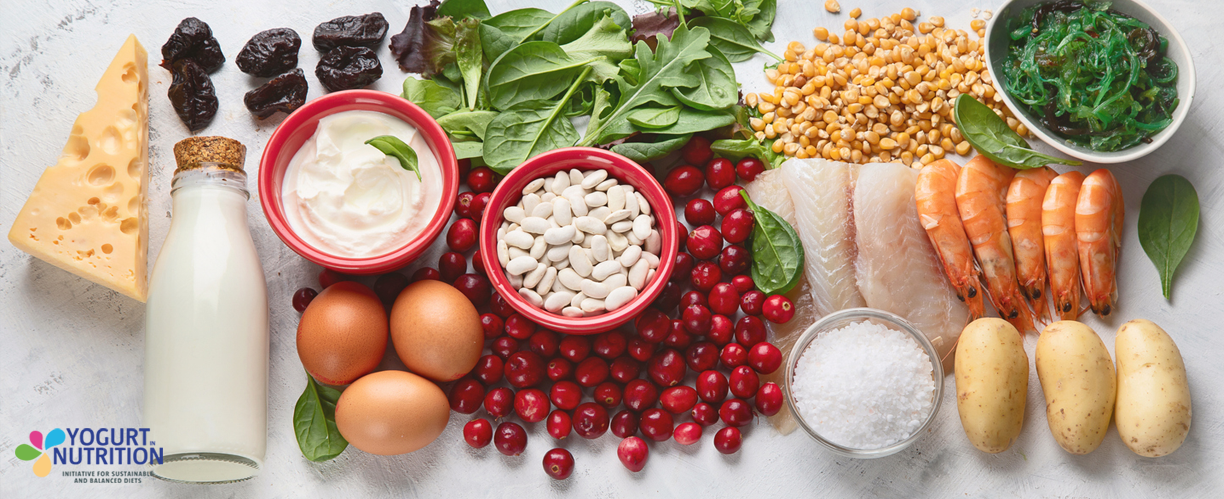Iodine is a trace element, which the body needs in very small amounts to stay healthy. What are its functions and where to find it?
What is iodine?
Iodine is a mineral, a trace element, mostly stored in our thyroid gland, which releases several thyroid hormones like thyroxine (T4) and triiodothyronine (T3). Iodine is essential for these hormones as it makes up 65 and 59% of the weight of the molecules respectively. These hormones are regulated by Thyroid-Stimulating hormone (TSH) whose secretion increases the uptake of iodine in the thyroid. These hormones regulate biochemical reactions including protein synthesis, enzymatic activities and metabolic activities such as body temperature regulation and maintenance of energy levels. In a deficiency state, TSH remains elevated and leads to goitre: an enlargement of the thyroid gland. In pregnancy, even a mild case of iodine deficiency is serious as it can cause problems in the child’s development and cognition, and it is considered one of the easiest preventable deficiencies leading to neurodevelopmental disorders.

Dietary recommendations
- For teenagers and adults, it is recommended to consume 150µg per day of iodine.
- The recommendation climbs to 220µg/day during pregnancy and 290µg during lactation.
- Recommendations are much higher in the first year of life at 130µg than during childhood (90µg). This is because in early developmental stages, iodine deficiency can lead to stunted growth and neurodevelopmental deficits.
- During the 9-13-year-old age group, the recommendation goes back up to 120µg.
Although it is difficult to consume too much iodine in a healthy and balanced diet, it is suggested to not consume more than 600µg per day in healthy adults.
Sources of iodine
Iodine can be found mostly in seaweed, fish and seafood, eggs, and dairy.

Many countries have fortified table salt with iodine as the salt form of iodine is the main form absorbed in the body. It is estimated that 88% of households have iodine-fortified salt. However, countries also have efforts to decrease salt consumption therefore dairy is becoming a more interesting source of iodine.
When to pay extra attention?
To some people, it might be hard to get enough iodine from their diets, as their needs are increased, or their food sources are limited.
For vegans, vegetarians and those who exclude fish and algae from their diets, it might be difficult to get enough iodine from the diet. They need to pay extra attention to their iodine intake. It is particularly concerning during pregnancy and childhood (up to the age of 3 years old).
Iodine in dairy
Iodine content in milk varies widely depending on the diet of the animal. There can even be seasonal variability in iodine concentrations, for example, cattle grazing on grass in the summer will produce milk with less iodine than cattle fed with cattle feed containing iodine in winter. All of this makes milks’ iodine concentrations vary from 33 to 534 µg/L. This means dairy can represent 13-64% of the recommended daily intake of iodine.
In UK, milk has on average 427µg/L and dairy products contribute to 51% of iodine intake in children and 34% in adults.
Even though the concentration of iodine in dairy milk varies widely it is still on average 10 times higher than in plant-based alternatives. Thus, dairy remains a good source of this nutrient for health, especially in places that don’t have easy access to seafood or iodised salts.
According to the national diet and nutrition survey in the UK, people who consume yogurt regularly were more likely to meet the nutrient recommendations for key vitamins and minerals including iodine compared to those who didn’t eat yogurt regularly.
It is recommended to consume 2-3 portions of dairy per day, yogurt is a nutrient-rich way of getting iodine.



